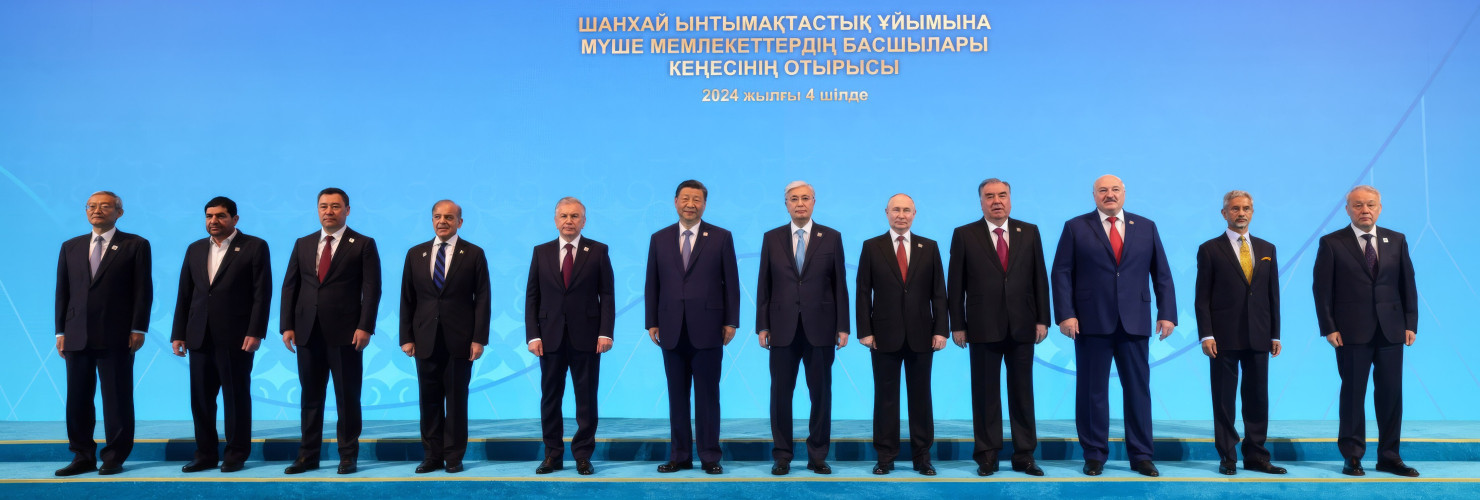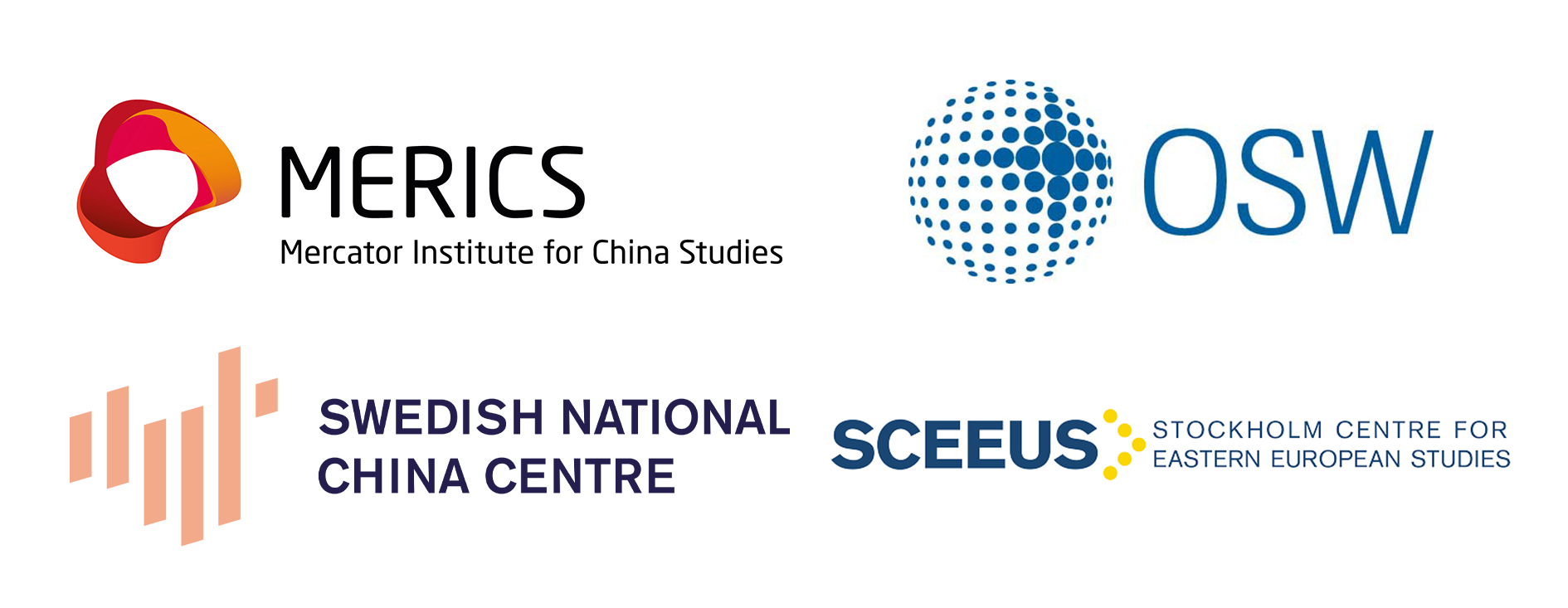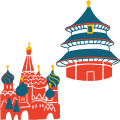

China and Russia are using the Shanghai Cooperation Organization to push alternative global order
The Shanghai Cooperation Organization (SCO), which has significantly widened its mandate since it was founded in 2001 as a regional forum for security issues, has become a prototype for China and Russia to institutionalize their coordination on geopolitical affairs, argues Claus Soong.
China and Russia are using multilateral institutions like the Shanghai Cooperation Organization (SCO) to strengthen their strategic coordination and build a new narrative to reshape the global order. The SCO, which has significantly widened its mandate since it was founded in 2001 as a regional forum for security issues, has become a prototype for the two powers to institutionalize their coordination on geopolitical affairs. The goal is to legitimize their influence over social and political norms in parts of the world outside the Western-led rules-based order and to promote an alternative order in which global power is shared by multiple states.
In a joint statement during President Xi Jinping’s visit to Moscow in May, China and Russia offered a rough sketch of how they would align efforts to achieve this: “Both sides, together with other member states, will continue to enhance the international influence of the Shanghai Cooperation Organization, promoting its role in building a multipolar world order centered on the United Nations and based on strict adherence to international legal principles.”
With its expansion and growing external engagement, the SCO has gained significance as a non-Western multilateral platform led by China. Originally focused on border security and confidence-building measures among China, Russia, Kazakhstan, Tajikistan, and Uzbekistan, the SCO today includes 10 member states, among them the three major non-Western powers, along with two observers and 14 dialogue partners from Southeast Asia to the Middle East. Together, they account for roughly a quarter of global GDP and 40% of the world’s population.
In recent years, the organization has conveyed a worldview emphasizing sovereignty and security, and amplifying Chinese and Russian narratives, such as preventing “color revolutions” (anti-Russia independence movements in Eastern Europe named for colors) or stopping a “new Cold War,” as Xi has stated, and “shaping a fair multipolar world order,” as Putin has remarked. As Putin’s Russia faces Western sanctions due to its war on Ukraine, the SCO has also provided a diplomatic platform through summits and ministerial meetings that have allowed both Beijing and Moscow to form a front with Global South countries more aligned with their anti-Western narratives and authoritarian view.
The SCO has also expanded its focus to global issues such as reconstructing Afghanistan and China’s Belt and Road Initiative, and now also to the call for enhancing international multipolarity. The expansion has given the organization political weight as a group of non-Western/Global South nations and shows that a China-initiated institution can gain political eminence without Western participation, crediting China as a leader in global governance, capable of achieving multipolarity in the global order.
Interests and values divide the group
Seen as China’s response to American containment in the Indo-Pacific and Russia’s response to NATO expansion, the SCO appears to be gaining greater geopolitical prominence – a new counter-, if not anti-, Western bloc. However, it is not an alliance organization, nor does it have a common basis of geopolitical interest. China and Russia are aligned but not allied, and they have differing interests in treating Central Asia as their sphere of influence. The Central Asian members must balance their relations with both countries, while engaging with extraterritorial actors such as the EU through the Union’s Global Gateway Initiative. India, which joined in 2017, must balance its engagement with all major powers – China, Russia and the West. India is also a member of the American-led Quadrilateral Security Dialogue (together with Australia and Japan) and it has ongoing border conflicts with China. In fact, there is more divergence among SCO members than alignment, despite its non-Western appearance. The call for collectively building a multipolar global order does not transcend the individual geopolitical interests of its members.
In addition to lacking common values and coherent geopolitical interests, the SCO also has no concrete leverage to take collective action. Its limitations were evident in its response to the Israeli attack on Iran, a full member state of the SCO. When Iran was targeted, the organization had little capacity for action beyond issuing calls for de-escalation and condemning both Israel on June 14 and the United States on June 23 for their military strikes. Nor does the SCO hold a unified position, as India refused to join the statement on June 14. The Indian Ministry of External Affairs clarified that “India did not participate in the discussions on the above-mentioned SCO statement.”
Building a common anti-Western narrative
Both China and Russia adopted a unified stance in condemning Israel and indirectly calling out the US during the conflict, emphasizing diplomatic solutions and criticizing the attacks as violations of the UN Charter and infringements on Iran’s sovereignty. Their messaging is clearly reflected in SCO statements and demonstrates a deepening strategic alignment in rhetoric, positioning themselves on the moral high ground in contrast to perceived Western double standards – that the West labels Russia a destabilizer for invading Ukraine, while remaining silent on, or even encouraging, Israel’s attack on Iran. China and Russia are advancing an anti-hegemonic narrative against unilateralism, using it to justify their own challenges to the existing Western-led international order.
This analysis is part of the China-Russia Dashboard, a collaborative research effort of the Centre for Eastern Studies (OSW), MERICS, and the Swedish National China Centre (NKK) and Stockholm Centre for Eastern European Studies (SCEEUS) at the Swedish Institute of International Affairs (UI). Explore the project here.


